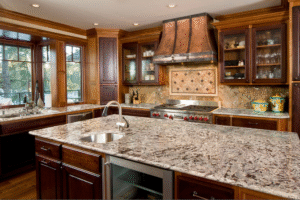Creating a space that blends traditional charm with modern simplicity—what we call transitional design—doesn’t always require a full room makeover. In Canadian homes where budgets, space, or time might be limited, you can make a remarkable impact using just two well-chosen accent pieces. These elements act as bridges between design eras, adding personality while allowing the room to evolve. Whether you’re sprucing up a hallway, upgrading a living corner, or giving an open area more definition, the right accents can refresh and refine your space with minimal effort.
What Makes a Space Transitional?
A Balance Between Classic and Contemporary
Transitional interiors live between two worlds: they’re not too ornate and not too stark. They use the warmth and character of traditional design—like curved edges, rich textures, and familiar silhouettes—while borrowing the clean lines and simplicity of modern décor.
For Canadian homeowners, this balance works especially well in open-concept layouts, older homes with modern renovations, or newly built spaces looking for character. You can lean either direction depending on your taste, as long as the overall feel remains harmonious and curated.
Neutral Palettes and Timeless Tones
Most transitional spaces feature soft, neutral colour schemes—think greys, beiges, off-whites, and muted blues or greens. These palettes create a calming foundation, letting accent pieces add interest without overwhelming the space. A transitional design often relies more on shape, texture, and subtle contrast than bold colour.
How Accent Pieces Influence the Space
Accent Furniture as Functional Style
Accent furniture—such as a sculptural chair, an ottoman, or a small console—offers both purpose and design flair. When used intentionally, one or two pieces can visually transform an underused corner or empty wall into a sophisticated vignette.
In a transitional space, look for pieces that carry a hint of tradition, like tufting or wood tones, but with simplified lines or modern upholstery. This helps anchor the space and blend styles seamlessly.
Decorative Accents That Add Depth
Decorative items—like a floor mirror, a ceramic vase, or framed wall art—can set the mood and tell a story. With just one or two of these thoughtfully selected accents, you can shift the energy of a room. The key is scale and placement.
Choose pieces that contrast subtly with your existing furniture. If your sofa is modern and minimalist, pair it with a more classic accent chair. If your coffee table is traditional, try a sleek metallic lamp to balance the look.
Choosing the Right 2 Accent Pieces
Piece One: A Signature Accent Chair
An accent chair is a perfect starting point for transitional design. It’s large enough to anchor a section of the room but small enough to avoid crowding the space. Look for something with soft curves, neutral fabric, and a touch of texture—like linen, velvet, or leather.
In Canadian homes, where cozy seating is essential for long winters, a comfortable yet stylish accent chair adds both elegance and usability. Place it near a window for reading or next to the sofa to round out the seating arrangement.
Piece Two: A Console or Decorative Mirror
Your second accent piece can either add function or visual height. A narrow console table works well in hallways or entry zones, providing a landing spot for keys, books, or candles. Opt for one with subtle wood grain, curved legs, or mixed materials for that transitional flair.
Alternatively, a large decorative mirror with a unique frame adds light and scale to small or darker rooms. It reflects other design elements, amplifying the impact of your layout. In Canadian interiors, where natural light may be limited in certain seasons, mirrors become especially valuable in creating a bright, open feel.
Placement Tips for Cohesion and Balance
Think Layers, Not Clutter
When using just two accent pieces, think in layers—not volume. A chair beside a console or a mirror above a bench creates depth without adding visual noise. Keep the surrounding area clean and grounded with a rug or small plant for cohesion.
Spacing is also key. Give each piece enough room to breathe so it feels intentional, not squeezed. Especially in tighter Canadian homes or apartments, spacing can make a major difference in how finished and functional a room feels.
Use Lighting to Define the Area
Accent lighting brings your two chosen pieces to life. A nearby floor lamp, pendant, or table lamp can highlight the accents without adding more furniture. Lighting helps distinguish the transitional zone within a larger space and supports the blend of old and new aesthetics.
Choose warm bulbs to enhance textures and materials, especially if you’ve chosen wood or upholstery with subtle detailing. Canadians often seek cozy ambience during long seasons, and soft lighting helps emphasize comfort without losing design integrity.
Less Can Be Luxurious
When it comes to transitional design, restraint is part of the appeal. Instead of filling a room with furniture, choosing just two standout accents lets you curate a refined and relaxed environment. It’s a minimalist approach rooted in timeless design, perfect for homeowners looking to evolve their space over time.
Accent pieces from Classico Roma offer the versatility and craftsmanship needed for transitional design, combining elegance with practicality. Whether you’re layering into an existing space or beginning with a blank canvas, these curated pieces allow you to shape a home that feels both current and classic.



